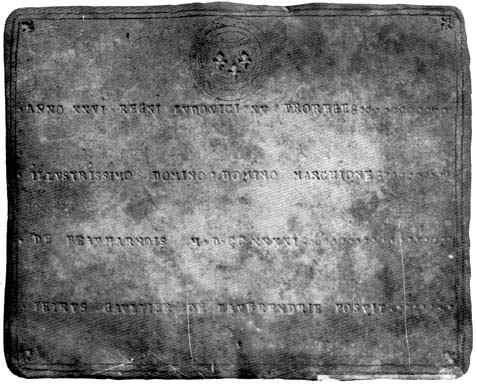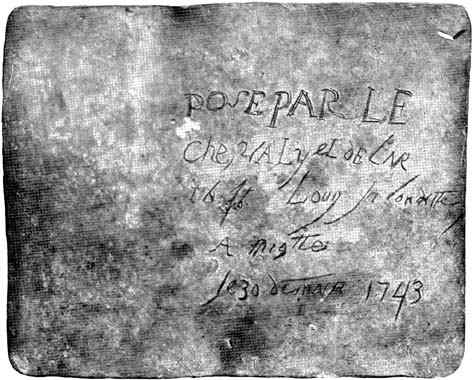Resource Center
On-Line Library

NEGenWeb Project
Resource Center
On-Line Library
19on horseback with arrows and lances as there are but few guns among them; the chief receives the French with great distinction; they can eat only with himself or with a chief of a strange tribe if he happens to meet with any; he honors with the title of the sun the most despicable of the French who find their way to his village. In October, 1750, this chief paid a visit to Fort Chartres on the Mississippi to salute the commander. Father Vivier went to see him and said he found him to be an exceedingly handsome man. He treated the priest with great politeness and invited him to go and give the spirit to his people, that is to say, to instruct them. His village, according to the report of the French who have been there, can furnish nine hundred men capable of bearing arms.26
On September 25, 1751, La Jonquiere wrote: "Last autumn Mons. De St. Clin effected an alliance with the Panismahas. a very powerful nation on the Missouri whose chiefs are absolute. That nation is governed by three brothers. The most powerful is called Stabaco. The eldest of the three went to see him (i. e., De St. Clin, the commandant at Fort Chartres), and he received him very well. He assured him that either he or his brother would go and see him this year.27
THIRD PERIOD, 1750 TO 1775 During the latter part of the fifties, a French soldier named Penachon, in charge of the magazine at Kaskaskia, deserted and fled up the Missouri river, roaming from tribe to tribe for some years until he reached the Mandans. Then lie returned to Canada with some traders and later drifted into Minnesota, where he met Jonathan Carver about 1766 and related to him an account of his adventures .28
In 1758 Du Pratz in his history says: "The French had penetrated up the Missouri river about three hundred leagues (825 miles), that is, at least as far as the mouth of the Platte river." 29
26 Lettres Edifiantes, vol. TV, pp. 318-320.
27 Wisconsin Historical Collections, vol. XVIII, P. 93.
28 Wisconsin Historical Collections, vol. XIX, p. 333; Journal of American History, vol. 1, p. 262.
29 Chittenden's American Fur Trade, p. 762; Kansas Historical Collections. vol. IX, p. 264.
20Jeffrey's map of 1760 locates the Omaha and the Otoe on the west side of the Missouri river.
In 1763 the French provinces in America passed into the hands of the English. The small fur trading companies dissolved and the traders failed to meet the Indian tribes at the accustomed time, causing intense suffering and want on the part of the Indians', who were thus obliged to journey to the Hudson Bay Company posts in Canada to dispose of their peltries and receive supplies.30 The Omahas have a tradition that "long ago they visited a great lake to the far north and traded there with white men." 31
It is probable that this journey was made during this temporary paralysis of the fur trade on the Mississippi.
In 1766 Carver, who was then in Minnesota., says that "to this place (that is, Fort La Reine, near Lake Winnipeg) the Mahas, who inhabit a country two hundred and fifty miles southwest, come also to trade with them and bring great quantities of Indian corn to exchange for knives, tomahawks and other articles." 32
In 1764 St. Louis was founded and Laclede had been granted the exclusive trade of the Missouri river.
In 1765 Father Watrin, a Jesuit, in his report to the propaganda at Rome about the Louisiana missions, speaks about the nations living on the Missouri river. "There may be seen the Missouris, the Kansas, the Acanois, the Octatas, the Osages and the Panimaha. These people had no missionaries." 33
In 1770 the Spanish Governor O'Reilly enacted laws governing the conduct of fur traders with the Indians.
From the year 1770 to about 1790, during the Spanish regime, not much is known of the upper Missouri region, as most of the documents of this period were removed to the archives of Spain. However, later investigations will no doubt throw an abundance of light on this period. About 1770 the Otoes were said to have established their village on the Platte river about forty to forty-five miles from its mouth. 34
30 The Great Company, by Beckles Wilson, vol. II, p. 25; Alexander Mackenzie's Voyages, vol. I, xxviii.
31 27th Annual Report Bureau of American Ethnology, p. 80.
32 27th Annual Report Bureau of American Ethnology, pp. 80-81.
33 American Catholic Historical Researches, Philadelphia, July, 1900, p. 92.
34 Early Western Travels, Thwaites, vol. XV, p. 132.

Reverse of Verendrve medal.
21FOURTH PERIOD, 1775 TO 1800
November 15, 1777, some Spanish official in St. Louis gave a summary of the Indian tribes who came there to receive presents and to trade. He mentions the "La Republica tribe under Chief Escatape (Iskatappe of Pike in 1806), composed of three hundred and fifty or four hundred warriors; the Hotos tribe under Chief La Bala (The Bullet), composed of some hundred warriors, located about fifteen leagues from the Misury river on the shores of the Platte; the Panis tribe under Chief Sokakahige, composed of five hundred or six hundred warriors, located about fifteen leagues from the Hotos tribe, on a small stream that branches off from the Plata river; the Majas (Omahas) tribe under Chief El Pajaro Negro (Blackbird), composed of four hundred and fifty or five hundred warriors, located about thirty-five or forty leagues overland from the Panis tribe, on a small tributary to the Misury, at a distance of about sixty leagues from the mouth of the Plata river. They plant maize and pumpkins " 35
About 1778 twenty-five or thirty members of the Missouri tribe, who had been defeated by their enemies, came and united with the Otoes.36
In 1780 Thos. Bently speaks of the "Missouri trade which of itself is consequential." 37
In 1789 Jean Baptiste Monier of St. Louis is said to have discovered the Ponca tribe and in consideration of this fact was granted the exclusive trade with that nation.38 During the nineties Francis Benoit, J. D'Eglize, R. Jusseaume, and Joseph Garau were regular traders up the Missouri river. 39
In 1794 the "Commercial Company for the Discovery of the Nations of the Upper Missouri" was formed in St. Louis with James Clamorgan and Antoine Reillhe as directors. The company sent three expeditions up the Missouri, the first in July, 1794, under John B. Truteau, the second in April, 1795, under Lecuyer
35 Wisconsin Historical Collections, vol. XVIII, pp. 360-362.
36 Nebraska Historical Collections, vol. XV, p. 8; Kansas Historical Collections, vol. IX, p. 250, says 1774.
37 Kaskaskia Records, p. 172, or Illinois Historical Collections, vol. V.
38 Missouri Historical Society Collections, vol. IV, p. 9.
39 South Dakota Historical Collections, vol. IV, p. 329; Billon's Annals of St. Louis.
22and the third September, 1795, under James Mackay. The latter built Fort Charles, about six miles below the later town of Omadi, and made an exploration tour through northern Nebraska in 1796, He also presented medals and commissions to the chiefs of the Omaha Indians. This company had the exclusive right to trade above the Ponca for ten years, but as Andrew Todd, one of the principal shareholders, died in 1796 the right passed to the company of Clamorgan, Loisel & Company. The Spanish company received copies of the journals and regular reports in regard to the nations, customs, etc., with which its men came in contact.40 A diligent search is now being made in order to secure copies of these documents which will be of great help to the future historian.
In concluding, we must confess that while we have given a large number of interesting facts, yet they are not of such a nature as to produce satisfactory conclusions, and consequently we can easily understand why the Spanish company gave as their purpose that it was "to enlighten the age in regard to that portion of the globe as yet so little known."
40 Missouri Historical Society Collections, vol. IV, No. 1; Article on Truteau's Journal; Annual Report American Historical Association, 1908, vol. I, pp. 185-196
23LIST OF SOURCES CONSULTED IN PREPARING THIS PAPER.
South Dakota Historical Collections.
Nebraska Historical Collections.
Kansas Historical Collections.
Mississippi Valley Historical Collections.
Wisconsin Historical Collections.
Louisiana Historical Collections, by French.
Missouri Historical Society Collections, St. Louis.
Morton, History of Nebraska.
Andreas, History of Nebraska.
Johnson, History of Nebraska.
Iowa Indians. Wm. H. Miner, Cedar Rapids, Iowa.
Pawnee Hero Stories and Folk Tales. G. B. Grinnell.
Discovery and Exploration of the Mississippi. John G. Shea.
La Hontan. Voyages to North America. 2 vols. Thwaites.
Coues, Lewis and Clark.
Margry Papers. 6 vols. (in French).
United States Catholic Historical Magazine. New York, 1887.
Acta et Dicta. St. Paul, Minn., Catholic Historical Society, 1907.
27th Annual Report Bureau of American Ethnology, Washington, D. C., 1905-1906.
History of Omaha. Savage and Bell, 1894.
World-Herald, Omaha, Nebraska, April 6, 1913.
History of Louisiana. Martin.
Lettres Ediflantes at Curieuses. 14 vols. Paris, France, 1819 (in French).
Journal of American History.
Chittenden's American Fur Trade.
The Great Company. 2 vol. Beckles, Wilson.
Early Western Travels. Thwaites.
Kaskaskia Records or Illinois Historical Collections.
Billon's Annals of St. Louis.
Annual Report of the American Historical Association, 1908, Washington, D. C.
Voyages. Alexander Mackenzie. 2 vols. New York, 1903.
American Catholic Historical Researches, Philadelphia. Martin I. J. Griffin.
 |
 |